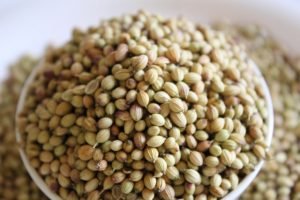What Does Mardi Gras Mean?
The name Mardi Gras is French for “Fat Tuesday”, reflecting the practice of the last night of eating richer, fatty foods before the ritual fasting of the Lenten season. The holiday is sometimes also known as Shrove Tuesday, from the word shrive, meaning “to administer the sacrament of confession to; hear the confessions of”. Popular practice is to put away all of the remaining rich, fatty foods in the household in preparation for the coming 40 days of Lent. The last week before Lent has been called “Shrove Week”, “Shrovetide”, and “Collop Monday”. Pancakes, donuts, and other desserts are associated with Shrove Tuesday celebrations, before the fasting season of Lent begins on Ash Wednesday.
In English-speaking countries, particularly those where Lutheranism or Anglicanism predominate, Mardi Gras is celebrated as Shrove Tuesday. In many areas (especially Louisiana), however, this is a separate festival called Carnival. The most famous Carnival celebration traditionally takes place in New Orleans on Mardi Gras Day and culminates with a parade led by Rex, king of Carnival. On Shrove Tuesday proper (the day before Ash Wednesday), many people actually partake
The origins of Mardi Gras can be traced to medieval Europe, passing through Rome and Venice in the 17th and 18th centuries to the French House of the Bourbons. From here, the traditional revelry of “Boeuf Gras,” or fatted calf, followed France to her colonies.
In 1699, French-Canadian explorer Jean Baptiste Le Moyne Sieur de Bienville arrived at a plot of ground 60 miles directly south of New Orleans, and named it “Pointe du Mardi Gras” when his men realized it was the eve of the festive holiday. Bienville also established “Fort Louis de la Louisiane” (which is now Mobile) in 1702. In 1703 this was moved to a site on the Mobile River, and renamed Fort Conde.
Here’s where things get tricky: while Bienville and his men enjoyed their festivities in Point du Mardi Gras, Mobile wasn’t having any part of it. The first recorded Mardi Gras celebration in what is now Alabama occurred when Nicholas Langlois held a small celebration on March 3, 1704, at Twenty-Seven Mile Bluff (now known as Demopolis). A few weeks later two other Frenchmen, Pierre Le Moy
Mardi Gras is the last day of Carnival season before Ash Wednesday. As Mardi Gras and Carnival are generally considered synonymous, some people may be surprised to learn that Mardi Gras does not refer to the entire Carnival season, but only the day before Ash Wednesday.
The term “Mardi Gras” is French for “Fat Tuesday.” While the holiday is known for its parades and costumes in New Orleans, it’s actually a legal holiday in many parts of the world. In fact, it has been observed in Catholic Europe since at least the Middle Ages, but became popular in America during the late 19th century when French-speaking immigrants settled in New Orleans.
In French-speaking countries such as France, Belgium, and Quebec, the term “Mardi Gras” refers to Shrove Tuesday. These countries celebrate Carnival or Fasnacht season instead (although they still observe Mardi Gras as well).
The term “Mardi Gras” is French for “Fat Tuesday,” reflecting the practice of the last night of eating richer, fatty foods before the ritual Lenten sacrifices and fasting of the Lenten season. Related popular practices are associated with celebrations before the fasting and religious obligations associated with the penitential season of Lent. In countries such as England, Mardi Gras is also known as Shrove Tuesday, which is derived from the word shrive, meaning “confess.”
In many areas, the term Mardi Gras has come to mean the whole period of activity related to the celebratory events, beyond just the single day. In some American cities, it is now called “Mardi Gras Day” or “Fat Tuesday”.
The festival season varies from city to city, as some traditions consider Mardi Gras the entire period between Epiphany or Twelfth Night (January 6) and Ash Wednesday. Others treat the final three-day period before Ash Wednesday as the Mardi Gras. In Mobile, Alabama, Mardi Gras-associated social events begin in November, followed by mystic society balls on Thanksgiving, then New Year’s Eve (which Mobile celebrates as “Old Year’s Night”), followed by parades and balls in January and
The earliest written documentation of Mardi Gras in America dates back to 1699, when a French explorer named Pierre Le Moyne d’Iberville celebrated it near what is now known as New Orleans. According to the Mississippi Historical Society, Iberville named the spot Point du Mardi Gras in honor of the festival.
The tradition did not catch on immediately: In 1703, the governors of Louisiana forbade Mardi Gras celebrations, and twenty years later, they prohibited public drunkenness and masked balls during the Carnival season. But while those restrictions were in place, private celebrations continued.
In 1827, a group of New Orleans-area businessmen calling themselves the Mistick Krewe of Comus (the name comes from a figure in Greek mythology) held the first organized New Orleans Mardi Gras celebration. The organization still hosts events today.
By 1840, there was an influx of both Creole and American settlers who brought new traditions with them; that year, four different groups staged parades throughout the city. The following year saw even more parades and balls, but police arrests for public intoxication and disorderly conduct reminded festivities that they would face consequences if they got too out of hand.
Since then, Mardi Gras has evolved into
Cajun Seasoning
This is my own mix…it’s a little spicy, so you may want to cut back on the cayenne if you don’t like it too hot. It’s great on fish, chicken, steak, and about anything else you want to add a little zip to.
1 tablespoon salt
1 tablespoon garlic powder
2 tablespoons paprika
2 tablespoons ground black pepper
1 tablespoon onion powder
1 tablespoon cayenne pepper
1 tablespoon dried leaf oregano
1 tablespoon dried thyme
I have always enjoyed cooking and in the past several years have gotten into the practice of trying to make a variety of condiments and sauces from scratch. I have learned that it is not difficult to make mayonnaise, for example, and I now find the store-bought variety unappealing. And so it was that when I saw this recipe for Cajun Seasoning on Serious Eats, I decided I needed to give it a try.
The recipe only calls for six ingredients – cayenne, dried oregano, garlic powder, onion powder, paprika and salt – but it has a great flavor. It is slightly sweet and the heat builds over time. The recipe calls for two tablespoons of the mix; I used one tablespoon on some homemade fries and was very pleased with the result.
I think this is going to be my go-to mix for adding a little spice to food. The only real downside is that it doesn’t seem to keep its kick as long as some mixes do; after a week or so it really begins to lose its potency. But if you are looking for something with a fresh taste and good kick, try this out!

